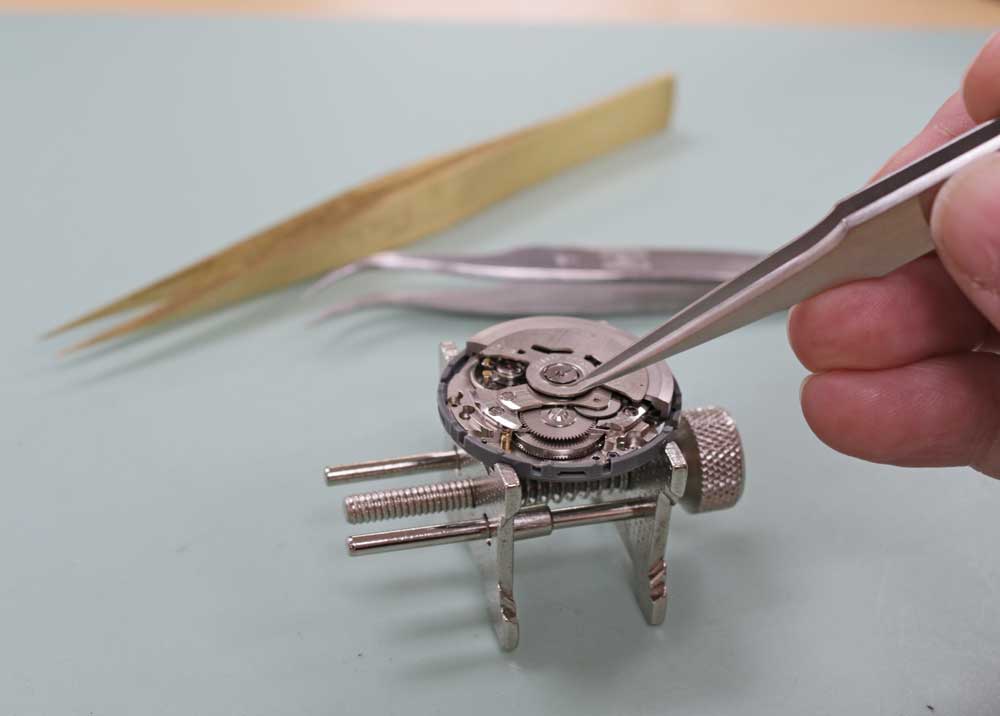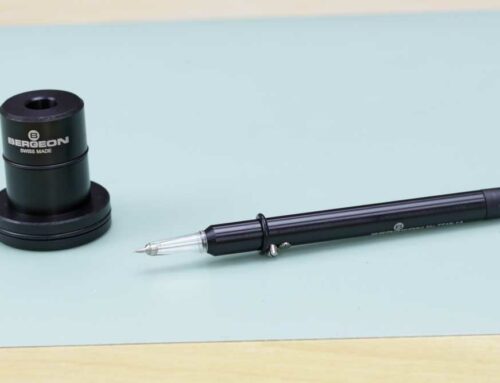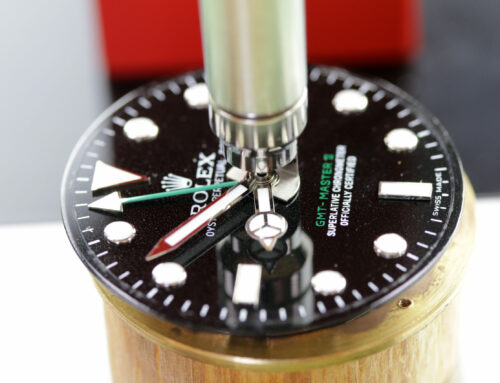Watchmakers use a variety of styles of tweezers for different applications. Watchmaker’s tweezers are usually very small and have a extremely sharp points for picking up watch components and moving watch parts around – the smallest pointed tweezers are designed to position watch parts, not bend and shape them. Here is a guide to tweezers styles and what they’re made of and the best use for them.
Standard tips are used in high precision work including assembling under a microscope. These tweezers are often used in watch and jewelry making.
Electronic or industrial tips are designed for work that does not require high precision. All tips are hand finished and this may result in some slight variation in size.
Tweezers tip styles
Style #3
Thin tips with beveled edges. Used for very fine work on anti-shock springs, some balance spring work and other very fine parts.
Style #6
Thin hooked tips. Used for wire-wrapping, forming, and bending. Provide a lot of power and are extremely sturdy.
Style #7
Curved and thin tips. Similar to #1. The curve allows the hand to rest on the bench while working.
Metal types used in tweezers
Carbon steel
Carbon steel is an extremely hard alloy. Ensures strong tips but it will easily rust. This alloy is magnetic and cannot be sterilized
Inox 02
Inox 02 is a standard magnetic stainless steel. It is not as hard as carbon steel because it contains chromium. Inox 02 will resist temperatures of around 400°C but cannot be sterilized.
Antimagnetic
Antimagnetic offers a good resistance to corrosion thanks to its high concentration of molybdenum and is 80% antimagnetic but is not as hard as Inox. Antimagnetic is resistant up to temperatures of around 400°C and is suitable for autoclave sterilization at 270°C.
Titanium
Titanium is totally resistant to corrosion from nitric acid, chloride, salt water, and the like. This alloy is not as hard as Inox 08 but is 40% lighter and more flexible. Titanium is I00% antimagnetic and resistant up to temperatures of around 430°C.
Dumostar
Dumostar is more elastic and more resistant to corrosion than the best stainless steels. It is also perfectly compatible with human tissues and is resistant to mineral and organic acids as well to salt. Although slightly more expensive than other alloys, Dumostar is 100% antimagnetic and is resistant to sterilization temperatures of up to 500°C. This is the most cost effective and appropriate alloy for laboratory use.
Brass
This alloy is 100% antimagnetic and is widely used for handling delicate components, especially in watch-making.


























your blog is much informative
As a new person to the fascination of watches, it is very difficult to pick the correct tools particularly when one tool can have varying prices i.e. hand removers.
As I work away for 3 out of 4 weeks I look forward to returning home to start pulling apart (haven’t got any back together yet). I find I need a few different tools each time or cannot progress.
Patience is a virtue for sure.
I have been a customer of yours for a fair amount of time. I have recently left a number of messages with you regarding an important question, and cannot get a response back from you!? Briefly, I purchased a Crown from you, the thread size was perfect, although the Crown stem was not long enough.
I included a copy of the invoice that came with the Crown in hopes that you would help me get the correct Crown. Several weeks, and multiple contacts later, I cannot get a response or recommendation back from you!?
As I shared with you in another email this morning, I want to order more parts, but I don’t want to continue to pay the shipping charges
Will you help me get the correct Crown so that I can get this job behind me?
Regards, Rick
Hello,
I can see that you have purchased from a us a few times, but am unable to find an order for a crown under your name or email address. If you can give more information through the contact us form, we will be able to help you with your crown and any other questions you may have. https://www.esslinger.com/contact-us/